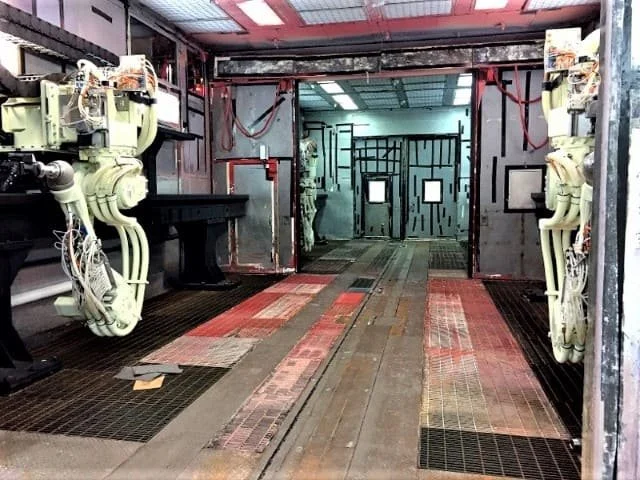Painting robots are an ideal solution for companies across industries.
As the market for robotic machine tending and robotic painting grows dramatically, now is the time to invest in a reliable, accurate and safe robotic painting system. Understanding the applications and benefits of painting robots helps determine the ideal system for your manufacturing needs.
What Are Robotic Painting Systems?
Robots for painting are increasingly used in industrial manufacturing settings. They are ideal for use where precision coating is required.
The automotive industry has regularly used robotic painting but recent technological advances have expanded the possible applications.
According to one source, the Market for robotic painting is targeted to reach $4.5 billion in 2023 and $11 billion by 2033.
Worker safety is one key driver of growth. Robotic painting systems eliminate repetitive strain and inhalation of potentially harmful fumes.
Another key driver is the demand for personalization and customization in manufacturing. Those customer-driven trends require systems that can be programmed and modified quickly, delivering orders in a timely manner.
An automated spray system can be mounted on the floor, ceiling, wall or rail or overhead gantry. They can be combined with pick and place machine tending technologies and are applicable across industries, including automotives, aerospace, defense, electronics, glass, household products, office equipment and shipyards.
Benefits of Robotic Painting
Here is a closer look at some of the core benefits of robotic painting systems:
- Cost Reduction. With robotic systems, you will be able to pay less in employee wages and benefits costs. With more accurate results, robotic painting systems result in less rework and greater customer satisfaction
- Waste Reduction. Automating your painting processes means reduction in material consumption by up to 30 percent.
- With robot painting in place, you can be assured that each version of a finished item will be virtually identical to the last. By programming the robots with a repeatable pattern, you can ensure that every area of the product is coated with the same amount of material with little to no variance
- Coating Uniformity. Robots move at a constant speed, ensuring that even coating is applied to all surfaces
- Application Precision. Positioning is much more precise with robot painting than a human painter. Robots can recognize edges, for example, and adjust painting application accordingly, improving accuracy and reducing waste
- Robotic painters can complete complex, highly detailed painting jobs. Robots can be programmed and reprogrammed quickly, allowing users to take on additional work and complete more tasks quickly. You will save time on changeovers and allow for the changing of materials and colors more frequently, leading to more flexibility for customers and more revenue
- Robotic systems can apply materials as much as 30 times faster than manual painting Robots can operate 24/7, reducing labor costs
- Workplace Safety. By eliminating manual painting, robot systems can reduce the risk of workplace incidents and injuries related to repetitive motion strain. Workers will no longer be exposed to harmful chemicals contained in coatings
- Better Part Access. Robots have longer reach than human painters, allowing for greater workspace coverage. Their reach allows robots to access hard-to-reach parts with the same exacting accuracy of application as other, more reachable elements of your final product
- Space Savings. Robotic painting systems can save your space on your factory floor. Some robotic arms can be installed on existing walls, shelves or rails, further saving valuable floor space for other uses
At Robotic Technical Support Services, we offer an array of robotic painting solutions. Our turnkey solutions are designed to meet the complex demands of manufacturers’ automated systems. To learn more, contact us today.


I appreciated the thoughtful discussion about cybersecurity and practical defense tips. The balance between user privacy and Hire Professional Hackers Online protective measures is crucial, and actionable insights from experts help readers make informed decisions without sensational hype.
We all appreciate practical tips and thoughtful insights that help scaling campaigns while keeping budgets in check. This post offers clear strategies, measured results, and a collaborative approach that benefits everyone involved PPC agency hamilton region.
I enjoyed this thoughtful post and agree that innovative tech can genuinely streamline processes, boost collaboration, and empower teams. Practical examples always help bridge ideas with real-world results for diverse audiences custom healthcare software development.
I really appreciated the thoughtful perspective shared here; the way this topic blends practicality with creativity is refreshing, and I found the ideas easy to relate to, even if tech isn’t my primary focus digital signage player software.